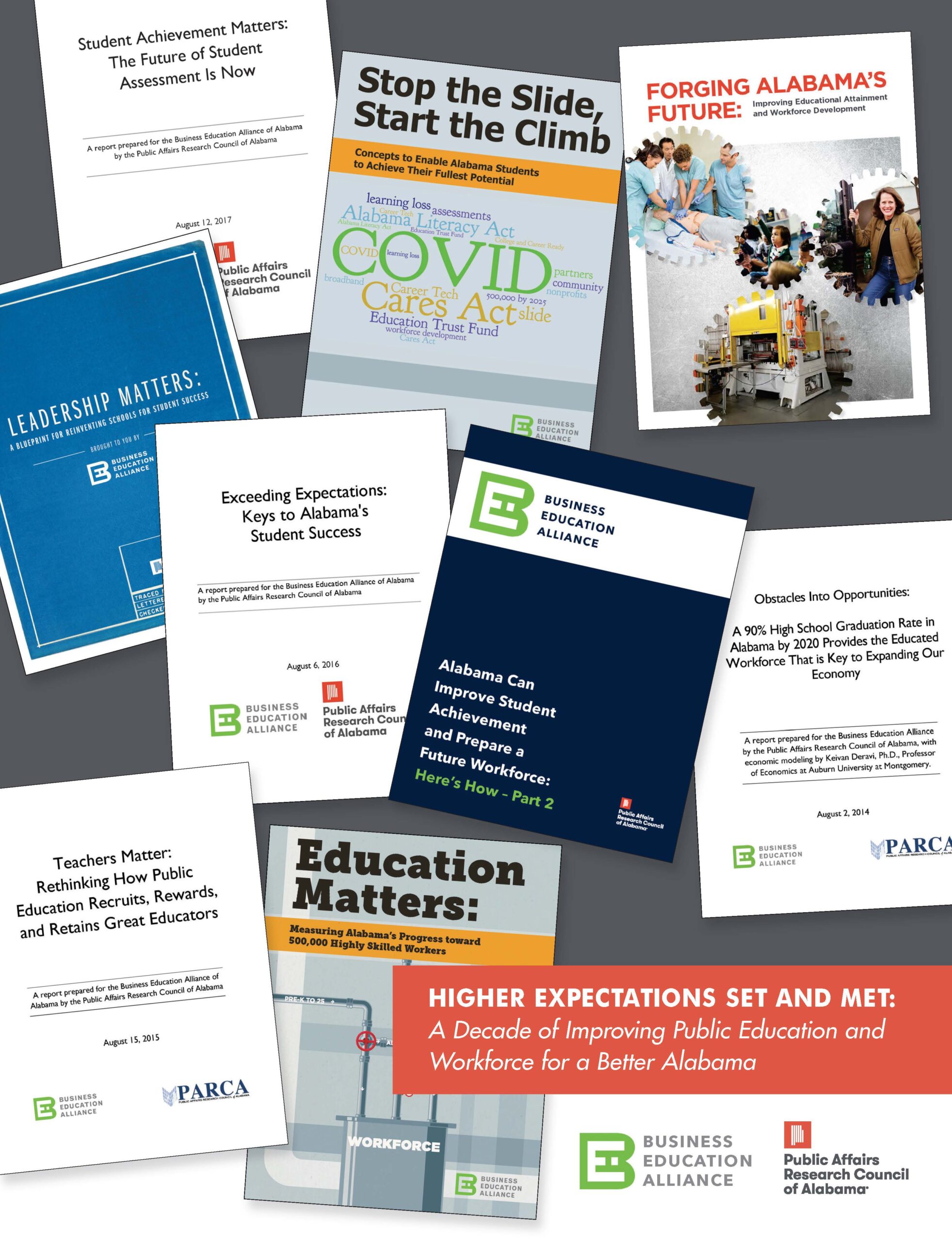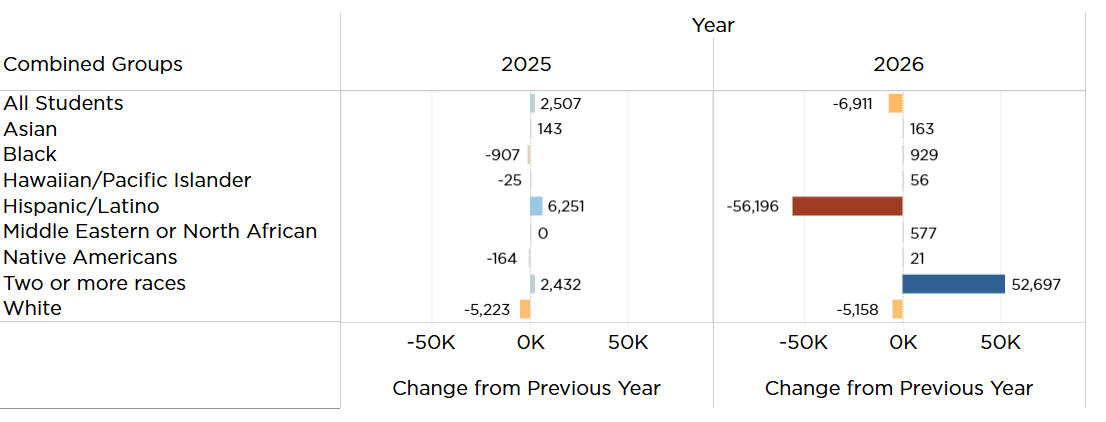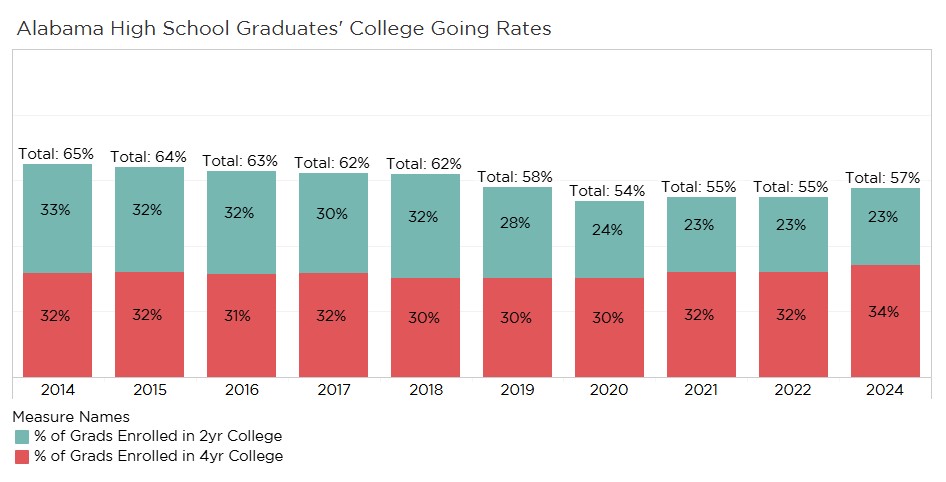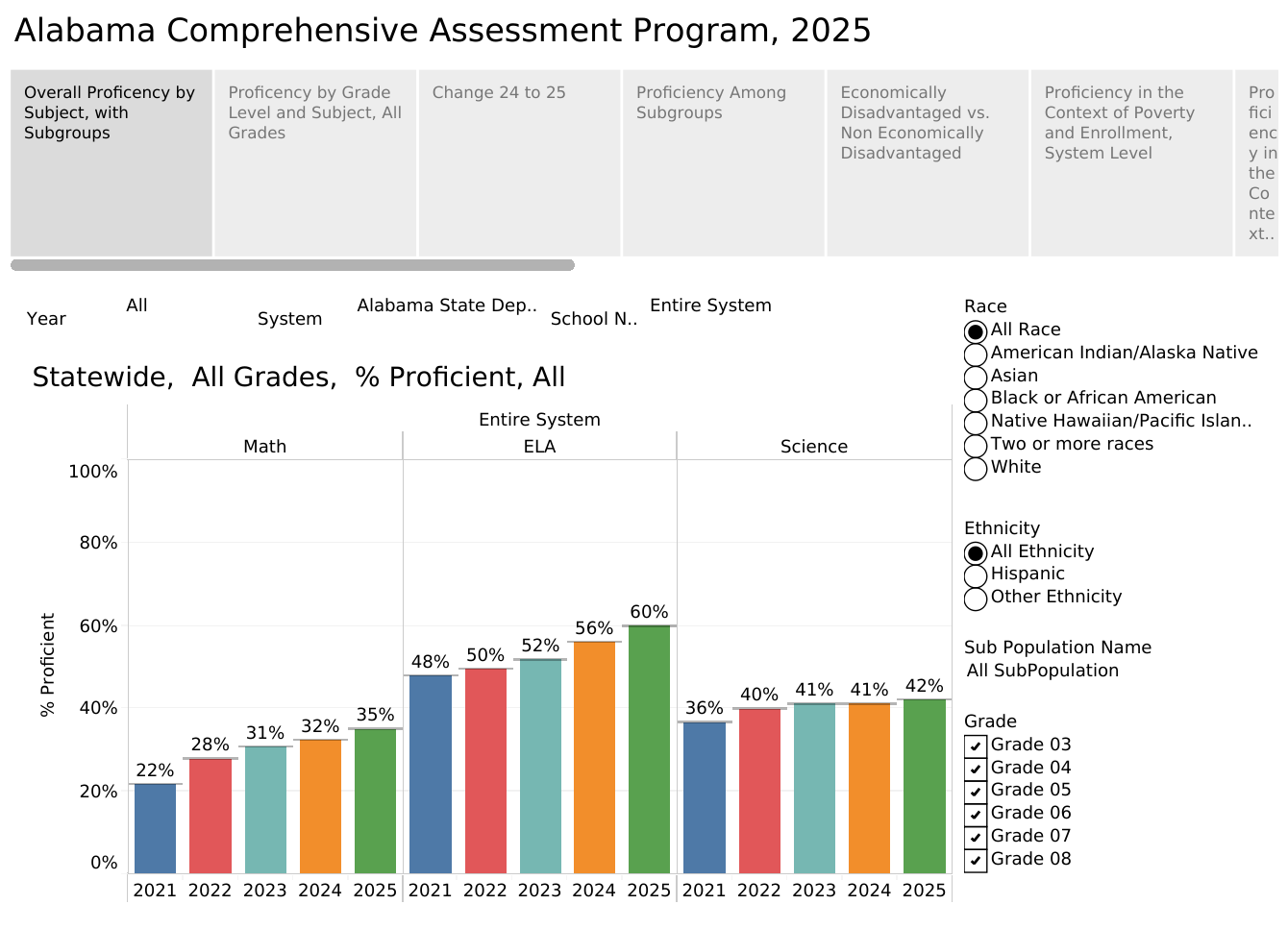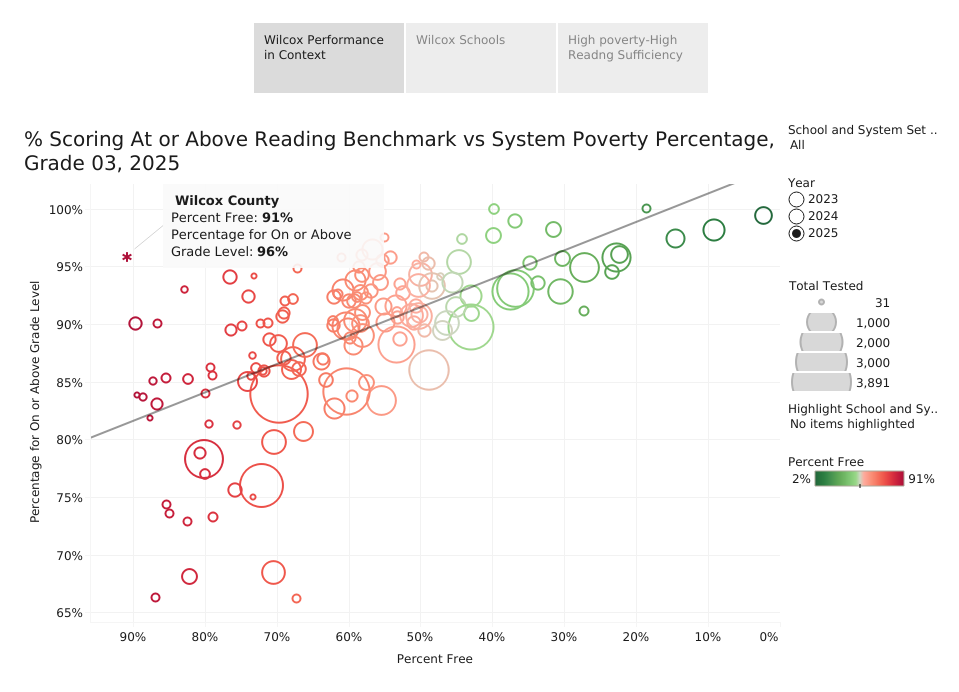
This is the first in our new Keys to Success series. The series spotlights schools and school systems that outperform their peers or show remarkable improvement and asks, “What is driving performance, and what can be replicated?” The series is supported by the generosity of Bedsole Foundation, Charles & Estelle Campbell Foundation, Daniel Foundation, Hugh Kaul Foundation, Mike & Gillian Goodrich Foundation, Robert Meyer Foundation, Susan Mott Web Foundation, and Wells Fargo Foundation.
Wilcox County Schools have the highest rate of economic disadvantage in the state, with 91% of students automatically qualifying for a free school lunch.
Yet, in spite of economic disadvantage, Wilcox County third graders were among the state’s top performers on this spring’s reading test, with 96% of students clearing the benchmark for grade-level promotion.
By the end of the summer literacy camp, all Wilcox students had passed the test.
ABC Elementary principal Cherylrettia Bennett finds motivation in beating the odds.
“For me, it’s a challenge. I like to be considered the underdog. We instill high expectations in our kids, and that spreads into the homes of our parents, and into the communities in which we serve,” she said. “We are not the bottom of the barrel. We are the cream of the crop.”
Schools with high concentrations of economically disadvantaged students tend to post lower scores on standardized tests than schools where economic disadvantage is not as concentrated. Across multiple measures, the rate of economic disadvantage among students tends to predict performance.
But in the case of 3rd grade reading results, Alabama schools and school systems are beginning to disrupt this relationship between economic disadvantage and reading results. Over 90% of students at each of the three Wilcox County Elementary Schools scored at or above the reading sufficiency benchmarks; 90% or more were from economically disadvantaged households.
Wilcox County wasn’t the only system achieving high rates of reading sufficiency, despite high rates of economic disadvantage. Neighboring school systems in Selma City and Lowndes County both have economic disadvantage rates near 90%. Both systems saw 90% or more of their third graders scoring at or above the reading proficiency benchmark.
In three other systems—Daleville City, and the Butler and Clarke county systems—more than three-quarters of the students are from economically disadvantaged schools, but 90% tested ready for promotion on the reading portion of the Alabama Comprehensive Assessment Program (ACAP).
Statewide, 35 schools with economic disadvantage rates of 75% or higher had 90% or more of their students testing above the benchmark.
What’s Working
PARCA’s visit to Wilcox County begins a project to understand what drives successes like these. It’s an important moment to identify factors that produce better results for students.
Schools have had an unprecedented level of financial support in recent years. Schools are in the final stages of spending the surge of federal spending aimed at overcoming the effects of school closures during the Covid-19 pandemic.
Thanks to a surge in state revenue and commitment by the Alabama Legislature, schools have seen unprecedented investment and effort in improving reading instruction since the passage, in 2019, of the Alabama Literacy Act.
The Act and the Legislature’s follow-up investment have re-energized a statewide corps of reading support specialists and building-based reading coaches in every elementary school. Teachers across the state have been retrained in reading instruction, adopting approaches grounded in the science of reading.
The Legislature and the Governor’s Office have also provided extra funding for schools like those in Wilcox, where there are high rates of economic disadvantage and a history of underperformance. The State Department of Education has provided focused support from academic specialists to local educators in those schools.
There is evidence that sustained investment in proven strategies is paying dividends. In the 2024 National Assessment of Educational Progress, Alabama and Louisiana were the only two states where students scored higher in 4th-grade reading than 4th-grade students did prior to the COVID-19 pandemic.
PARCA recently interviewed Wilcox County’s superintendent, Dr. Andre’ Saulsberry, and the principals, teachers, and reading coaches at Wilcox County’s three elementary schools about the factors that contributed to their success.
Starting Early
The recent success is built on years of effort, said Saulsberry, effort that starts with reaching children in their earliest years so that they come into kindergarten ready to learn.
Wilcox County, with support from the Department of Early Childhood Education, became the first county where Alabama’s First Class Pre-K was available to all students who wanted it. Wilcox teachers and administrators credit Pre-K with preparing students socially so that they entered Kindergarten ready to learn.
Wilcox County also offers Head Start for three-year-olds and has applied to start Head Start for 2-year-olds.
The interest in early childhood education isn’t new. Eleven years ago, Wilcox began participating in the HIPPY program, which provides home visits to parents of children between the ages of 2 and 5. The program provides parents with parenting strategies and resources for beginning the educational journey in the home, realizing that parents are the first teachers.
According to Saulsberry, years of cultivation have produced a climate in which parents are active and informed participants in their children’s educational journey. Saulsberry said it is especially gratifying to have fathers interested, informed, and engaged, something he didn’t use to see. “We are reaping the benefits of investments we made years ago,” Saulsberry said.
Principal as Instructional Leader of an Instructional Team
Wilcox County Elementary Schools are led by professionals who know how to teach reading and can model it for others.
Two principals were reading coaches before taking over as principals. The third was an elementary reading teacher and completed the state-sponsored training in the science of reading, known as LETRS. All three then received a second round of LETRS-training, a version geared towards administrators.
With their own classroom experience and with all that training and coaching, the principals know what good teaching looks like. They all regularly visit classrooms and observe their teachers in action. Afterwards, they offer praise and suggestions when merited and will sometimes take a turn at the front of the classroom if modeling a lesson would help.
Each school’s reading coach also collaborates with K-3 teachers to analyze student data, target instruction, and improve technique. The coaches strive for a relationship with teachers that is not perceived as evaluation but as collaboration and support. According to Saulsberry, all K-3 teachers in Wilcox were LETRS-trained.
In fact, much of the elementary school faculty in Wilcox County is LETRS-trained since many of the teachers now teaching in grades 4-6 started out teaching in the earlier grades. Reading interventionists and Special Education teachers are also trained in LETRS.
Hobbs Elementary Principal Vernita Lassiter said LETRS training and the state’s support have been helpful, but the most effective professional development is when Wilcox County faculty members start learning from one another.
“The most beneficial professional development, where we got the most buy-in, was when it was coming from peers. We know we are in the same shoes. We feed off each other,” she said.
The schools hold faculty and staff retreats to dive deep into their data and plans. Teaching has changed, they said. It is more collaborative, and lessons are more mapped to a progressive set of academic standards that build on each other from year to year.
Student Data – drawn from classwork, formative assessments, and practice ACAP tests – gives teachers and coaches greater insight into what piece of the reading puzzle is frustrating a student. Their assessment tool, Aimsweb, helps monitor student progress and flag students who might need evaluation for dyslexia. With more information, interventions can be targeted.
Bennett said the team involves everyone at the school, not just the faculty and staff, but also the bus drivers and cafeteria staff. The school’s prominently displayed continuous improvement plan has four goals: to increase student academic proficiency, decrease discipline issues, increase attendance, and engage parents and the community. Strategies and measures support those goals, and everyone has a role to play.
Small Schools: Extra Help
One factor working in their favor was size. Wilcox County, like many rural counties in Alabama, has steadily lost population over time as economic activity has become increasingly focused in urbanized metropolitan counties. The overall population decline has led to fewer students in the Wilcox County School System.
However, the system has, to some extent, turned that into an advantage, keeping class sizes low and seeing that each student gets the specialized attention they need.
ABC Elementary had only 12 students enrolled in its 3rd grade class; F.S. Ervin Elementary, 21; and J.E. Hobbs Elementary, 41. That’s a total of just over seventy students across the system. Like every elementary school in the state, each of the Wilcox schools had a full-time K-3 Reading coach.
And last year, there was more instructional help beyond that. Two of the schools—ABC and Hobbs Elementary Schools—were designated by Gov. Kay Ivey as Governor’s Turnaround Schools. Those schools, two of 15 statewide, received extra funding and additional instructional support from state experts. Both schools used the extra money to put an extra trained teacher’s aide in each K-2 classroom and to provide an additional teacher’s aide per grade level, from 3rd to 6th. Hobbs also employed two academic interventionists.
Ervin and ABC shared a speech pathologist, while Hobbs had one of their own.
Ervin, which didn’t have access to the turnaround funds, devised a creative solution for providing students with extra support. The school built an extra ACAP-focused period into the schedule. During that period, students left their regular classrooms to work with a different teacher who could provide a fresh perspective in an area where each student was struggling. It worked like specialized small-group tutoring.
With small classes and extra personnel, students could receive more individualized evaluations and help.
This year, Wilcox has been informed that the Wilcox Schools are being phased out of the turnaround program. So, the system won’t be bringing back those extra-paraprofessionals they’d added. Some of the personnel are being transitioned to other roles. Regardless, the system will have to do more with less.
That doesn’t discourage Saulsberry. He feels like he has built a well-trained team that has seen that they and their students can meet high expectations.
Saulsberry said that small classes are advantageous, but the essential ingredient is a well-trained teacher. A larger class with high-quality instruction is preferable to a small class led by an uninspired teacher.
Stable, rooted, and trained faculty and staff
It is challenging to recruit and retain teachers in rural school districts. Saulsberry said many young teachers from elsewhere don’t apply or, if they are hired, don’t persist.
“They want to be near a mall or Walmart. We don’t have that to offer,” he said.
But as a counter strategy, Wilcox likes finding teacher candidates who will build a career in the system. Wilcox County natives, whether they graduated with teaching degrees or not, make good candidates. They know what they are getting into and tend to be committed to the community. Even if their college degree is in a different field, a recruited prospect can receive the on-the-job training and experience needed to get their teaching certificate.
Saulsberry said some of his best teachers didn’t come through the traditional teacher training route. He used Governor’s Turnaround Funding to hire Professional Development Services, LLC, a Montgomery-based educational consulting firm, to help those teachers learn classroom management and instructional techniques they lacked.
Wilcox teachers are rooted in the community. Of the 10 faculty members who gathered recently to talk about Wilcox County’s success in reading, all but one grew up in Wilcox County. The one exception is married to a Wilcox County native. The system’s superintendent is a Wilcox County native and has spent 10 years in his post, a long term of service for a superintendent.
ABC Elementary Principal Cherylrettia Bennett said she knows her students’ grandparents because she went to school with them. She also knows the kids’ parents because they were her students when she was a teacher. That connection provides insight into a child’s context and gives her contacts and credibility when speaking to the family.
Priscilla Lett, a third-grade teacher at ABC, said parents knew they’d get a call from her any time a child was absent or late. Parents realized she cared, and they responded with a deeper feeling of accountability. “If Miss Lett cares that much about their education, I need to start caring more because I don’t want anyone to care more about my babies’ education than I do.”
Community Involvement
All three elementary schools stressed the importance of involving parents and the community in inspiring and supporting students to meet high expectations.
Parents were asked to write notes of encouragement for their children that were posted on the school walls. During morning announcements, community leaders or football and basketball coaches would challenge students to perform academically.
Local businesses provided gift certificates to teachers to show their appreciation.
The Parent-Teacher Organization found ways of motivating students, like providing ice cream treats and holding special fun days.
Jaserica Angion, a 3rd grade teacher Hobbs, said she could see the children light up when they got encouragement and attention. And because other people believed in them, they believed in themselves.
“I set high expectations from day one,” she said. “They were really competitive and collaborative. And they reached those expectations.”
